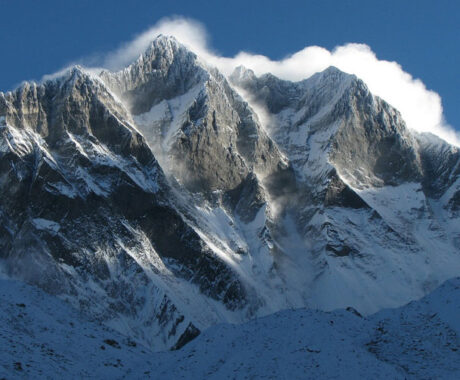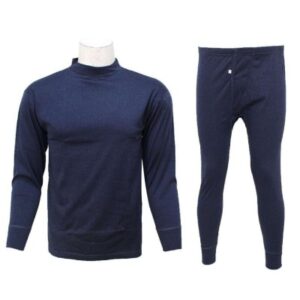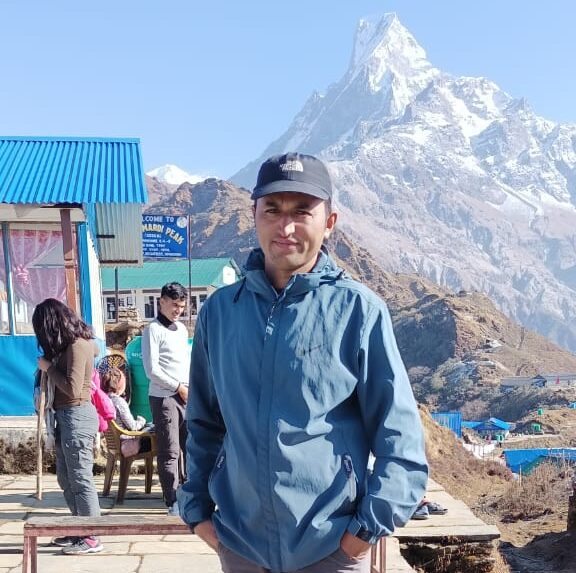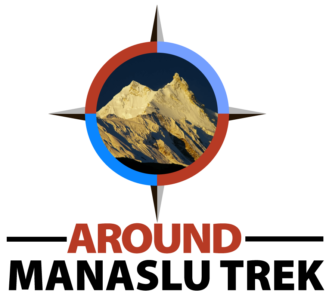Mt. Dhaulagiri Expedition
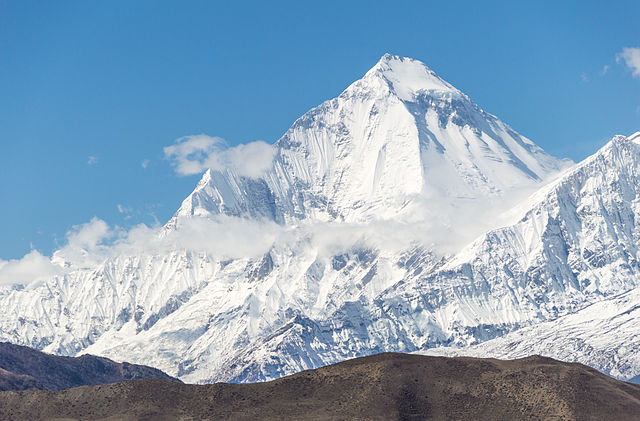
Trip Facts
- Destination Nepal
- Activity Expedition
- Duration 50 Days
- Trip Difficulty challenging
- Max. Altitude 8167
- Best Time March to may
- Start and End Kathmandu - Kathmandu
- Meals Breakfast / Lunch / Dinner
- Accommodation 5 star hotel in Kathmandu &Camping
- Group Size 2 - 20
Trip Highlights
- Magnificent Himalayan landscape featuring sweeping vistas of the neighboring peaks.
- overcoming the world's seventh-highest mountain.
- Assessing mountaineering abilities in glacier navigation, rock climbing, and ice climbing.
- seeing the sharp alterations in the weather and terrain.
- Climbers have a unique cultural experience that fully immerses them in the kindness and rich customs of the Nepalese people.
Introduction
In addition to being often translated as “the Great White Mountain,” the Sanskrit term Dhaulagiri may also mean “dazzling,” “white,” or “beautiful mountain.” At 8,167 meters (26,795 ft) above sea level, Dhaulagiri is the seventh-highest peak in the world. It is a component of the Himalayan mountain range and is situated in the Dhaulagiri Himal mountain range in north-central Nepal.
This mountain is located in the Myagdi District in Nepal’s northwest region. From the Kaligandaki River to the Bheri River in the west, Mt. Dhaulagiri stretches for approximately 120 kilometers. The Gandaki River Basin’s highest peak is also Mount Dhaulagiri.
Thirty kilometers of Dhaulagiri’s summit give shape to an otherwise jumbled landscape of glaciers, ice falls, and winding ridges. Numerous pyramid-shaped summits rise along the main crest. From east to west, four summits are higher than 25,000 feet in elevation.
In 1960, Kurt Diemberger, Peter Diener, Ernst Forrer, Albin Schelbert, Nyima Dorji, and Nawang Dorji, as part of a Swiss/Austrian expedition, completed the first ascent of Dhaulagiri.
Due to its technical difficulties and the sense of achievement that comes from reaching the top, climbers are drawn to the peak. A peak like Dhaulagiri may provide a fulfilling and significant experience for many climbers just through the training, preparation, and effort to summit the mountain.
The week-long walk to the base camp at 4750 meters is part of the nearly seven-week Dhaulagiri Expedition. Dhaulagiri is a tough peak and a challenging climb regardless of the route demanding a high degree of competence, even though there are several ways up it. The North East Ridge is the usual route up Dhaulagiri, and it involves three camps above basecamp.
Best seasons for Mt. Dhaulagiri Expedition
Selecting the ideal season will increase the likelihood of a successful Dhaulagiri adventure. Let’s examine each in turn.
Spring (March to May)
The optimum time to climb the high peaks is during expedition season, which takes place in the spring. The longer days and milder temperatures of spring can be beneficial, but the melting of snow and ice increases the risk of rockfall and avalanches. Although there is still a chance of severe gusts and possible snowfall, the weather is generally suitable for climbing.
The trail’s unparalleled splendor of verdant vegetation is made possible by the moderate temperatures. At this time of year, the mountain’s layer of snow melts, exposing a landscape brimming with color.
Summer/Monsoon (June to August)
For the Dhaulagiri Expedition, it is usually not advised to go during the monsoon season, which is marked by intense rains. There has been a lot of rain, cloud cover, and decreased visibility due to the unpredictable weather. The paths get slick and landslide-prone.
It is advisable to steer clear of organizing the Dhaulagiri Expedition at this time.
Fall / Autumn (September to November)
For the Dhaulagiri Expedition, autumn is yet another fantastic season. It is typified by dry conditions, bright skies, and consistent weather. Autumn’s clear, bright sky, comfortable daytime temperatures, cool evenings, minimal precipitation, and all-around warmer weather all help to maintain the ecosystem’s overall stability.
Autumn is a great season to climb since precipitation is less dangerous. Autumn is a favored season for the Dhaulagiri Expedition because of its consistent weather patterns and better climbing conditions.
Winter (December to February)
Winter is regarded as the Dhaulagiri Expedition’s most difficult and worst season. Wintertime brings very cold temperatures, copious amounts of snow, and strong winds. Avalanches and frostbite are more likely to occur due to the extensive snow cover on the mountain, making ascending much more challenging.
Mt. Dhaulagiri Expedition Difficulty
Even the most skilled mountaineers find the Dhaulagiri Expedition to be one of the hardest and most challenging climbing expeditions in the world. Requirements include strong mountaineering skills, physical fitness, and previous experience climbing at high altitudes.
Much of the route is composed of steep slopes, snowy terrain, and crevasses, which call for highly skilled climbing from climbers. You must be proficient in rope handling, glacier travel, crevasse rescue, crampon and ice axe use, and navigation.
A significant technical obstacle is also presented by the high altitude, which results in lower oxygen levels and related physical and mental strain. To accomplish a safe and successful ascent of Dhaulagiri, climbers need to be well-equipped and prepared to face these technical challenges.
In addition to scheduling enough time for relaxation and recuperation in between ascents and descents, climbers must allow enough time for acclimatization in base camps and higher camps. The trip consists of setting up several high camps, pushing towards the peak, and gradually increasing elevation. Time and careful planning are also needed for the descent from the peak and return to base camp.
Remembering that the weather in the high mountains can be erratic and requiring readiness for last-minute adjustments is crucial. Determining the ideal time for a Dhaulagiri trip and guaranteeing the application of appropriate safety measures need consulting with knowledgeable local guides and expedition firms.
Outline Itinerary
Day 01: Arrival Kathmandu airport, pick up to hotel in Kathmandu – 1,300m
Day 02: Kathmandu Day Sightseeing – 1,300m
Day 03: Kathmandu Expedition briefing days – 1,300m
Day 04: Fly from Kathmandu to Pokhara 850m – 30 min and Drive to hotel
Day 05: Drive from Pokhara to Marpha 2,700m – 08 hrs
Day 06: Rest day in Marpha – 2,700m
Day 07: Trek to Yak khakhra 4,100m – 08 hrs
Day 08: Trek to Hi camp 4,900m – 04 hrs
Day 09: Rest day in Hi camp – 4,900m
Day 10: Trek to Hindan valley camp 4,900m – 08 hrs
Day 11: Rest day Hidden valley camp 4,900m – 07 hrs
Day 12: Trek to Dhaulagiri base camp4,800m vai frinch pass 5420m – 08 hrs
Day 13 – Day 40 : Mt. Dhaulagiri Summit time
Day 41: Trek down to Italy camp 3,600m – 05 hrs
Day 42: Trek to Devan 2,500m – 05 hrs
Day 43: Trek to Bagher 1,600m – 05 hrs
Day 44: Drive from Bagher to Pokhara 850m – 08 hrs
Day 45: Rest day Pokhara – 850m
Day 46: Rest day Pokhara- 850m
Day 47: Fly from Pokhara to Kathmandu 1,300m – 30 min
Day 48: Kathmandu – 1,300m
Day 49: Kathmandu – 1,300m
Day 50: Departure at Kathmandu airport – 1,300m
Alternative High-Altitude Expeditions Similar to Mt. Dhaulagiri Expedition
If you’re captivated by the challenging ascent of Mt. Dhaulagiri (8,167m) and looking for other high-altitude adventures, here are some incredible alternatives. Whether you’re seeking another tough climb, a high-altitude trek, or a combination of both, these options will take you through breathtaking landscapes and provide a true Himalayan experience.
- Mt Makalu Expedition – 56 Days: Conquer one of the most remote and difficult peaks in the world, offering a truly wild adventure.
- Mt. Kanchenjunga Expedition – 55 Days: Tackle the third-highest mountain, with a demanding climb and an unmatched wilderness experience.
- Annapurna I Expedition – 48 Days: legendary climb offering technical challenges and sweeping views of the Annapurna Massif.
- Annapurna Circuit Trek – 16 Days: A world-renowned trek that loops around the Annapurna range, featuring diverse landscapes and the iconic Thorong La Pass.
Detailed Itinerary
-
Day 1: Arrival Kathmandu airport, pick up to hotel in Kathmandu - 1,300m
Altitude: 1300mMeals: BreakfastAccommodation: 5 star hotel in kathmandu -
Day 2: Kathmandu Day Sightseeing - 1,300m
Altitude: 1300mMeals: breakfastAccommodation: 5 star hotel in kathmandu -
Day 3: Kathmandu Expedition briefing days - 1,300m
Altitude: 1300mMeals: Breakfast / lunch / DinnerAccommodation: 5 star hotel in kathmandu -
Day 4: Fly from Kathmandu to Pokhara 850m - 30 min
Altitude: 850mMeals: BreakfastAccommodation: 4 star hotel in Pokhara -
Day 5: Drive from Pokhara to Marpha 2,700m - 08 hrs
Altitude: 2700mMeals: Breakfast / lunch / DinnerAccommodation: Tea house -
Day 6: Rest day in Marpha - 2,700m
Altitude: 2700mMeals: Breakfast / lunch / DinnerAccommodation: Tea house -
Day 7: Trek to Yak kharkha 4,100m - 08 hrs
Altitude: 4000mMeals: Breakfast / lunch / DinnerAccommodation: Camping -
Day 8: Trek to Hi camp 4,900m - 04 hrs
Altitude: 4600mMeals: Breakfast / lunch / DinnerAccommodation: Camping -
Day 9: Rest day in Hi camp - 4,900m
Altitude: 4600mMeals: Breakfast / lunch / DinnerAccommodation: Camping -
Day 10: Trek to Hidan valley camp 4,900m - 08 hrs
Altitude: 5100mMeals: Breakfast / lunch / DinnerAccommodation: Camping -
Day 11: Rest day Hidden valley camp 4,900m - 07 hrs
Altitude: 5100mMeals: Breakfast / lunch / DinnerAccommodation: Camping -
Day 12: Trek to Dhaulagiri base camp 4,800m - 08hrs
Altitude: 4800mMeals: Breakfast / lunch / DinnerAccommodation: Camping -
Day 13 - Day 40 : MT Dhaulaghari Summite time
Altitude: 4800m to 8167mMeals: Breakfast / lunch / DinnerAccommodation: Camping -
Day 41: Trek down to Itali camp - 3,600m
Altitude: 3500mMeals: Breakfast / lunch / DinnerAccommodation: Camping -
Day 42: Trek to Dovan 2,500m - 05 hrs
Altitude: 2500mMeals: Breakfast / lunch / DinnerAccommodation: Camping -
Day 43: Trek to Bhaghar1,600m - 05 hrs
Altitude: 2000mMeals: Breakfast / lunch / DinnerAccommodation: Camping -
Day 44. Drive from Bhaghar to Pokhara 850m - 08 hrs
Altitude: 850mMeals: Breakfast / lunch / DinnerAccommodation: 4 star hotel Pokhara -
Day 45: Rest day pokhara - 850m
Altitude: 850mMeals: Breakfast / lunch / DinnerAccommodation: 4 star hotel Pokhara -
Day 46: Rest day Pokhara - 850m
Altitude: 850mMeals: Breakfast / lunch / DinnerAccommodation: 4 star hotel Pokhara -
Day 47: Fly from Pokhara to Kathmandu 1,300m
Altitude: 1300mMeals: Breakfast/lunch/DinnerAccommodation: 5 star hotel in kathmandu -
Day 48: Kathmandu 1,300m
Altitude: 1300mMeals: Breakfast / lunch / DinnerAccommodation: 5 star hotel in kathmandu -
Day 49: Kathmandu - 1,300m
Altitude: 1300mMeals: Breakfast / lunch / DinnerAccommodation: 5 star hotel in Kathmandu -
Day 50: Departure from Kathmandu Airport - 1,300m
Altitude: 1300mMeals: Breakfast
What's included
- Arrival & Departure: Pick and drop facility-Airport/Hotel/Airport
- Accommodation: 4 nights stay at a deluxe hotel in Kathmandu on Bed & Breakfast Basis-Double Room and 2 nights stay in Pokhara on Bed & Breakfast Basis- Double Room
- Welcome dinner: One Welcome Dinner in tourist standard restaurant in Kathmandu with Office’s Staffs
- Domestic Transportation: Kathmandu-Pokhara-Kathmandu by flight inclusive of domestic Airport Tax
- Permits & Fees: Dhaulagiri Expedition Permit +Summit Route Permit Ice Fall Route, National park & TIMS permit fees
- Porters: Porters up to & back from BC
- Hot drinking water: Facility of hot drinking water as per the need
- Oxygen for Dhaulagiri: O2 cylinder: 2 oxygen (O2) cylinders for each Member and 1 oxygen bottle. for each High- altitude Sherpa. The extra oxygen will be stored at Basecamp for emergencies
- Mask & Regulator: 1 Set of top Out mask for each member and high-altitude Sherpa
- High Tent: Necessary VE25 North Face High Tent for Members and High-Altitude Sherpa
- High Altitude Climbing Sherpa: 1 Climbing Sherpa per member
- Satellite Phone: Phone calls will be priced as per call duration.
What's not included
- International airfare to and from Kathmandu.
- Nepalese Visa charges
- Extra night in Kathmandu: Extra night accommodation in Kathmandu. In case of early arrival or late departure, early return from the expedition (due to any reason) than the scheduled itinerary.
- Insurance: Travel and High Altitude Insurance / Accident / Medical / emergency evacuation
- Sherpa summit Bonus: Mandatory – Minimum USD 1,300
- Tips: Please calculate some tips for Basecamp staffs and porters
- The full set of Member's personal climbing equipment & clothing
- Rescue Evacuation: Emergency rescue evacuation cost, if needed, and all other expenses of personal nature
- Any other item not listed in the "Price Includes" section
Trekking Gears
Before embarking on the Everest Base Camp Trek, it is crucial to meticulously pack the necessary clothing and gear, while also acquiring general knowledge about the trekking areas. As is well-known, the majority of trekking routes in Nepal commence from the subtropical region and ascend through the sub-alpine zone, eventually reaching the alpine zone above 4000m.
For instance, the ultimate destinations of many trails in the upper Khumbu region include Everest Base Camp, Kalapatthar, Gokyo, and the three high passes. All these locations are situated at altitudes exceeding 4,800m above sea level. Several treks initiate from various points such as Kathmandu, Lukla, Jiri, Bhandar, Salleri, Khari Khola, or Thame Dada.
To ensure a safe and comfortable trek in the Himalayan region, it is highly recommended to bring the appropriate equipment and gear to cope with the cold temperatures. The following is a list of essential equipment and gear, which can be purchased either in the Thamel market or brought from your home country:
Baggage
- 70-100 liters Duffle bag
For trekking and expeditions, a duffel bag is essential to pack all kinds of trekking equipment. Duffel bags come in various sizes, ranging from 60 liters to 100 liters. There are different brands available, such as The North Face, Sonam, Sherpa, Rab, and Everest Hikes. You can purchase these bags both online and offline in your homeland or in Kathmandu, particularly in Thamel's trekking shops. The cost varies depending on the brand, ranging from $15 to $100.
- Water proof day pack 30-40 liters
For hiking and trekking, you can choose from various brands of day bags. We recommend a 30 to 45-liter waterproof, strong, and good-quality day bag. Prices range from $40 to $200, depending on the brand and quality. You can purchase it in your homeland or buy it at the Thamel market (a trekking shop). Typically, this bag is used for day hiking and carries toiletries, emergency medical supplies, snacks, a water bottle, a jacket, warm shirts/t-shirts, a hat, trekking poles, and gloves.
- Pancho / Raincoat
Rain, wind, and snow are common in trekking areas. Typically, to avoid rain, we use a poncho, which also helps keep our body, clothes, and day pack dry. The cost of a raincoat is $10 to $50, depending on the quality, and it can be found in Thamel (a trekking shop). Alternatively, if possible, you can bring one from your own source.
- Power Bank / Trekking Solar
In the Himalayas, a trekking area, electricity is limited due to a small hydro power station. Sometimes, the electricity may not work, and often solar panels are used in most places. If the day is not sunny, then solar panels may not work. In that case, we can use our own backup to charge electronic devices. The quality makes the price vary from $50 up to $150. You can buy it in a Kathmandu trekking shop, or you can bring it on your own.
- Water Filter
During mountain treks, it is essential to stay hydrated by drinking either hot or cold water. The mountain water is robust and rich in minerals. Having a water filter machine allows you to filter this water. This is not only environmentally friendly but also cost-effective, as plastic bottled water can be expensive. The price range for water filters is $50 to $100, depending on the brand. You can purchase one in your own country or buy it at a Thamel trekking shop.
- Sleeping bag (comfort rated _20)
Normally, we use a sleeping bag during camping trekking and teahouse trekking. In teahouses, we are provided with blankets, but during the busy season, the blankets may not be sufficient. That's why we highly recommend owning a sleeping bag. Sleeping bags come in different types, ranging from -5 degrees to -30 degrees, and they vary in price. If you choose to buy a local Nepali product, the cost may not be expensive, ranging from Rs 5000 to Rs 20000. However, if you prefer a brand like The North Face, Sonam, Sherpa, or RAV, the cost can range from $200 to $1000. You can purchase them online or offline.
In Nepal, you have the option to rent or buy a sleeping bag. If you opt for a trekking package, the organizer will arrange sleeping bags based on different trekking areas.
- Head torch
During our Himalaya trekking, we ventured into remote areas where electricity and lighting systems were scarce, even in teahouses and high passes such as Thorang Pass, Larkey Pass, and the three high passes. In these places, especially during nighttime trips to the toilet or while crossing high passes, a headlight is essential. Headlights come in different types, including a normal one, one with a battery, or another with an electric source, ranging in cost from $10 to $50. You can purchase them online or offline, either from trekking shops in Thamel or in your home country.
- Water bottles 1 lit 2
During Himalayan trekking, it is advisable to carry two types of bottles: a 1-liter small thermos for hot water, tea, or coffee, and another 1-liter bottle for regular drinking water. The prices for these bottles range from $7 to $50. You can purchase them at Thamel trekking shops or in your home country. In Nepal, these bottles are available both online and offline.
- Sun glass (100% up protection)
During Himalayan hiking and trekking, it is essential to have sunglasses that provide protection against dust, wind, snow, cold, and heat. Different weather conditions require different types of sunglasses. We highly recommend reputable brands for sunglasses, with prices ranging from $10 to 200%. These sunglasses are readily available both online and offline. You can conveniently purchase them from trekking shops in Kathmandu Thamel or from retailers in your own country.
Clothing Essential
- Water proof jacket
During Himalaya hiking and trekking, where you may encounter rain, wind, cold, heat, dust, and snow, it is essential to invest in a high-quality waterproof jacket for protection. Various brands offer reliable options, such as The North Face, Sherpa, Sonam, Black Diamond, and RAB, with prices ranging from $100 to $500. These jackets are available for purchase both online and offline. You can find them at The Kathmandu Thamel trekking shop or in stores in your own country.
- Warm down jacket
During the trekking, we need a down jacket for cold places. We highly recommend a local or international brand depending on your budget. The cost will start from $5 and can go up to $1000. The recommended brands are "The North Face, Sonam, Black Diamond, Sherpa," which you can buy from your home country or in Kathmandu Thamel trekking shops. They are available both online and offline.
- Warm jumper
When reaching the teahouses during Himalayan treks, it is advisable to change into warmer clothes. We highly recommend bringing a jumper, and there are both local and international brands available, depending on your budget. Prices start from $30 to $120. If you already have one, that's fine; otherwise, you can purchase it in Nepal from the Thamel market, both online and offline.
- Trekking trousers
During Himalaya trekking, it is essential to have waterproof trousers to protect against rain, wind, dust, cold, and snow. We highly recommend choosing a brand based on your budget, with prices ranging from $20 to $150. Some notable trekking trouser brands include "The North Face," "Sonam," "Black Diamond," and "RAB." These trousers can be purchased both online and offline. If you already have them, you can bring them along; otherwise, you can purchase them at the Nepal Thamel Market.
- Base layer shirts
Normally, during Himalayan trekking, we use base layer shirts to protect ourselves from wind, dust, sun, and rain while hiking. There are both local and international brands available, with costs ranging from $20 to $120. You can purchase them either online or offline. If you already have one, you can bring it with you; otherwise, you can buy it at a trekking shop in Nepal.
During Himalayan trekking, the trekking areas can be extremely cold. We highly recommend purchasing a set of thermal clothing. There are both local and international brands available, such as The North Face, Sonam, Sherpa, Black Diamond, Kathmandu, and Everest. The cost can range from $50 to $250, and you can find these sets both online and offline. If you already have a set, you can use that; otherwise, we recommend buying one in Nepal, specifically at the Thamel market.
- Sunhat/warm hat/beanie
During Himalayan trekking and hiking, it is advisable to wear a sun hat to protect yourself from the sun. Additionally, when feeling cold, you can use your own woolen hat. We highly recommend purchasing either local or international brands, with prices starting from $5 and going up to $25. You can find these hats in the Thamel market in Nepal.
- Scarfs
During Himalayas trekking, it is essential to protect your neck, ears, mouth, and nose. We highly recommend purchasing different types of scarves, which are available in Nepal Thamel trekking shops. Prices start from $3 and go up to $25.
- Hiking boots
During Himalayan hiking and trekking, the most crucial equipment is footwear, particularly trekking boots. These boots are essential for safeguarding your ankles, ensuring safe walking, and being physically and mentally prepared for the trek. We highly recommend purchasing internationally recognized waterproof shoe brands such as Salomon, Hoka, Lowa, and Marmot. The cost typically starts from $150 and can go up to $400. You can find these brands in both Europe and Asia, including the Kathmandu Thamel market.
- Trekking socks / liner sock/heavy mountaineering socks
During Himalaya hiking and trekking, it is essential to have different types of socks depending on your budget. We highly recommend investing in trekking socks, with prices ranging from $3 to $30. There are both local and international brands available, and you can purchase them in Kathmandu's Thamel market.
- Sun protection / Lip Gaurd
During Himalayan hiking and trekking, we encounter various weather conditions such as sun, snow, cold, and dust, which can dry out the skin and lips. In such situations, it is essential to use protection, especially if you have sun allergy. We highly recommend purchasing lip balm and sunscreen, with costs ranging from $1 to $30. These products can be bought at trekking shops in Thamel, Kathmandu.
- Wash bag toiletries
During Himalayan hiking and trekking, we consistently rely on nature for various needs. For long toilet breaks, it is essential to carry toilet paper. Whether at tea houses or during the trek, having a good quality toilet paper is crucial. We highly recommend purchasing it from Thamel trekking shops, where the cost ranges from $1 to $2.
- Antibacterial hand wash
During Himalayan hiking and trekking, where access to washing towels or hot water is limited, it is recommended to purchase wet paper. The cost starts from $2 and can go up to $8 at medical shops in Thamel.
- Travel towel
During Himalayan hiking and trekking, the hotels are not luxurious; they are based on local standards. It is advisable to carry both a large and a small towel for drying the face and body. These items can be purchased at trekking shops in Thamel, with prices ranging from $2 to $20.
- Small pad lock to lock your bag
While hiking and trekking in the Himalayas, our duffel bag is carried by the porter. It is advisable to secure all your equipment inside the bag with a lock. We highly recommend purchasing a small lock, with costs ranging from $1 to $5, which can be found in Kathmandu's trekking shops.
- Medical Kits
During Himalayas hiking and trekking, most of the time, we are in remote areas and need to carry a basic medical kit with us. The emergency primary medicines we should have depend on our needs. You can buy them at a medical shop in the Thamel market. The basic first aid kit should include antiseptic cream, throat lozenges, diarrhea treatment (like loperamide), altitude sickness medication (such as acetazolamide), painkillers, insect repellent, plasters, blister treatment, insect repellent, and rehydration salts like Dioralite. Additionally, it's advisable to carry glucose tablets and multi-vitamin tablets.
- Trekking pole / Sleeping bag liner / Travel clothes / Camera / Pen knife
Normally, when getting ready for Himalayan hiking and trekking, both physically and mentally, it's essential to have trekking poles. They provide support for another leg, and there are various types available. We highly recommend investing in a good quality pole.
Inside your sleeping bag, a liner is necessary to keep warm. Before and after trekking, comfortable city clothes are essential. You can use your old ones or opt to buy new ones depending on your preference.
During the trek, capturing different angles and views with a good camera is crucial. You can use your existing one or invest in a new camera based on your budget.
In case of emergencies or for general use during the trek, it's advisable to have a Swiss small knife. You can purchase all these items at Thamel trekking shops.
What Not To Pack?
- Jewelry and valuables things, Heavy zoom lenses for your camera, Too many cotton clothes/ more than one pair of jeans, Bulky towels
During Himalayan tours, including activities such as hiking, trekking, peak climbing, and expeditions, we strongly advise against bringing items such as jewelry, gold, excessive cash, large cameras, too many cotton clothes, thick towels, etc.
Climbing Gear
- Climbing boots
- Climbing jacket and paint set
- Ice Axe
- Climbing Crampons set
- Climbing Rob
- Expedition day bag
- Harness set 6
- Climbing Glove
- Climbing torch light
- Climbing Sleeping bag
- Climbing tend
- Climbing water proof matrix
- Climbing cooking pot and small gas with stop
- Oxygen cylinder
- mitts or jumars
- Climbing trekking pole
- pee botal
- Climbing tea cup ,spoon and fork
- Climbing helmet
FAQs of Mt. Dhaulagiri Expedition
-
Which season is ideal for the Dhaulagiri Expedition?
April to May, the pre-monsoon season, and September to November, the post-monsoon season, are the ideal periods to do the Dhaulagiri Expedition. Clearer sky and more consistent weather are usually available at these times. -
Does the Dhaulagiri Expedition need any permits?
Yes, obtaining several permits is necessary. These include trekking permits, conservation area access permits, and the Nepal Government's Expedition Royalty permit. -
Is hiring a guide for the Dhaulagiri Expedition required?
Hiring seasoned guides or joining a renowned expedition team is highly recommended, while it's not required. In addition to crucial help, they offer safety precautions, logistical support, and local knowledge. -
In what way is the Dhaulagiri Expedition challenging?
Because of its high altitude, difficult climbing parts, erratic weather, and isolated location, the Dhaulagiri Expedition is regarded as being exceptionally difficult. It demands a great degree of physical fitness, high-altitude climbing expertise, and mountaineering ability. -
For the Dhaulagiri Expedition, is previous climbing experience required?
It is extremely suggested to have prior climbing expertise. Experience in high-altitude climbing, technical mountaineering abilities, rope handling, glacier navigation, and crevasse rescue are all prerequisites for climbing. -
What is the expedition's average group size?
While group numbers might vary, it is important to maintain a good climber-to-guide ratio for safety and individualized attention. -
What dangers and difficulties does the Dhaulagiri Expedition face?
Altitude sickness, severe weather, avalanches, crevasses, and steep terrain are some of the dangers associated with the Dhaulagiri Expedition. To reduce these hazards, it's crucial to follow professional advice, take safety precautions, and adjust appropriately. -
How can one prevent altitude sickness?
For the duration of the adventure, carry energy bars, walk at a leisurely pace, stay hydrated with lots of water, and refrain from using tobacco products and alcohol.
Trip You May Like
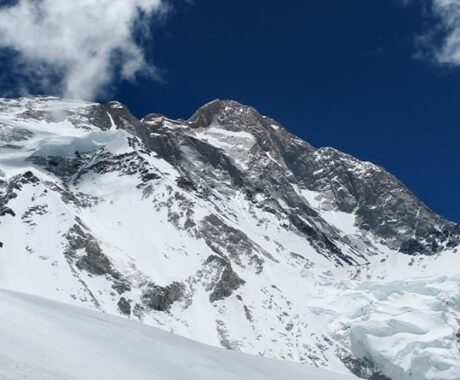
Mt Makalu Expedition
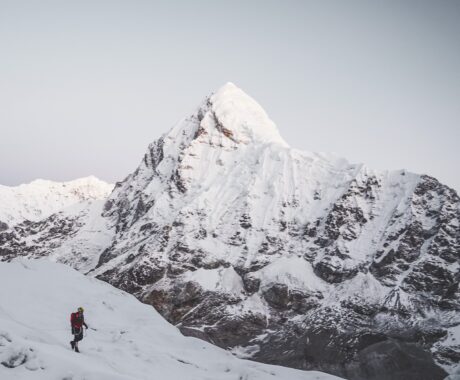
Pumori Expedition
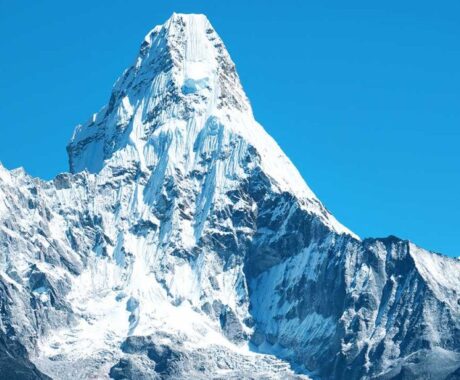
Ama Dablam Expedition
